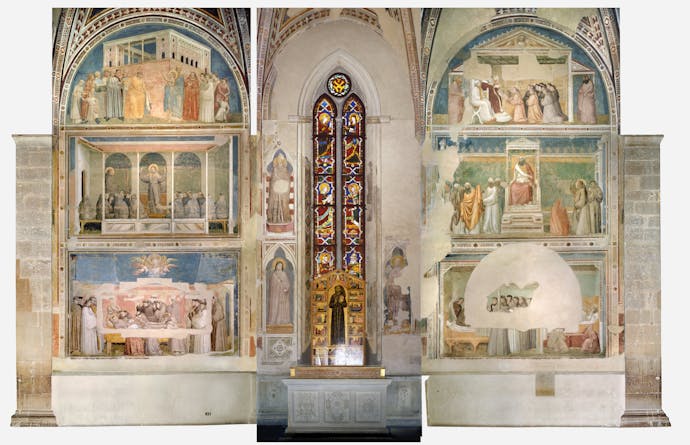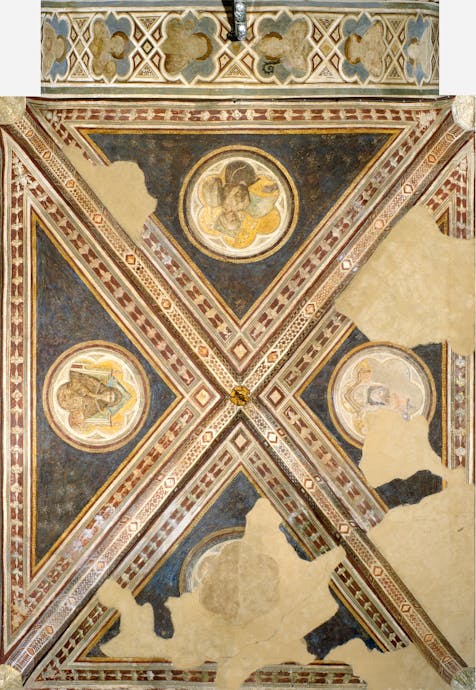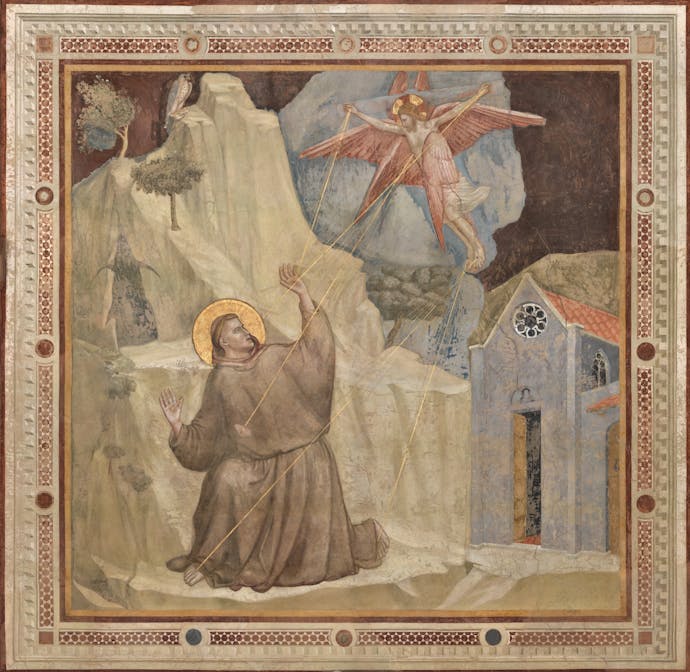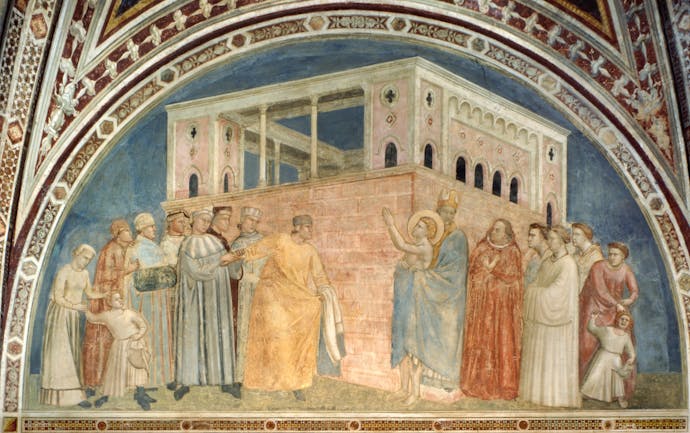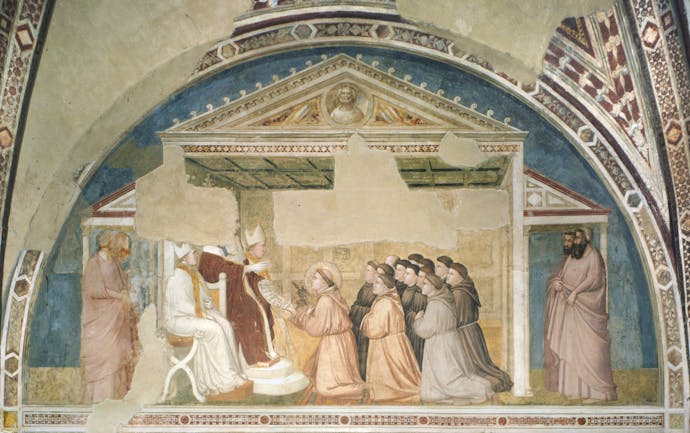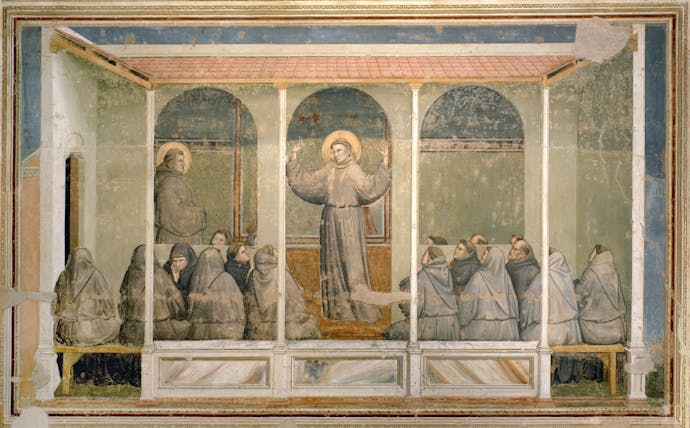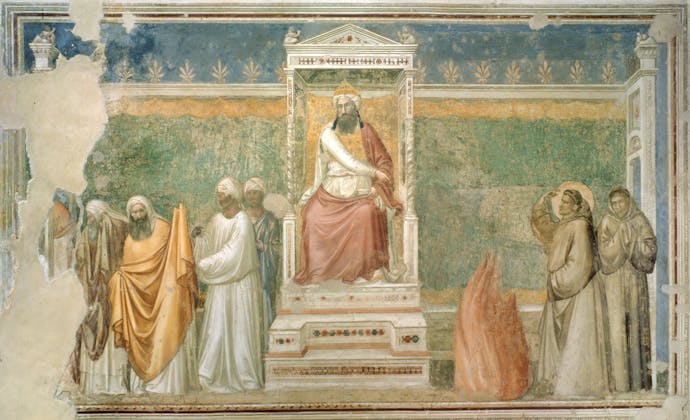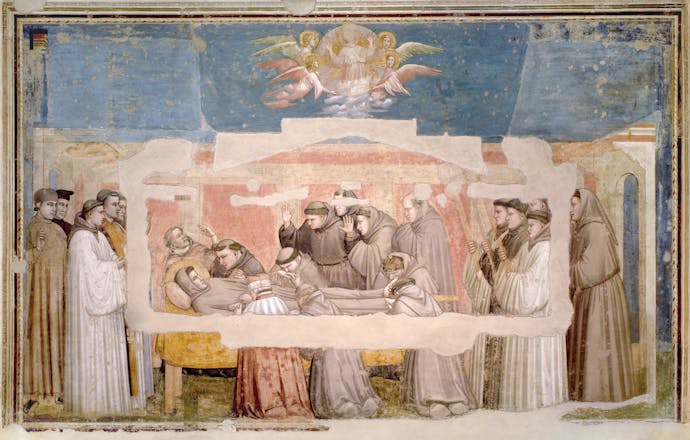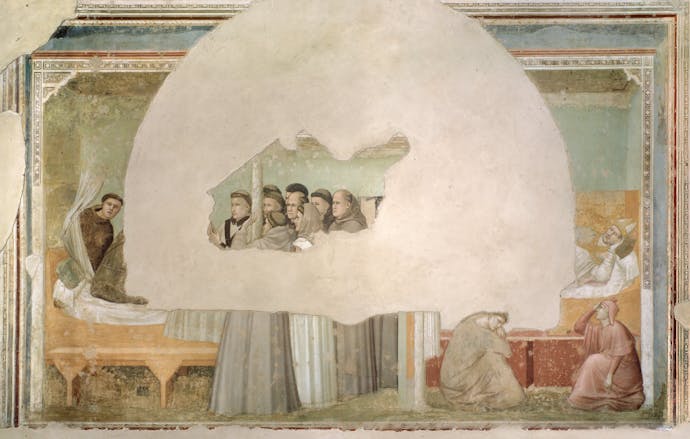Giotto
Notice
We inform visitors that the restoration site with scaffolding is being erected in the Bardi Chapel. Therefore the Giotto frescoes with the Stories of Saint Francis will not be visible for the duration of the restoration period.
Artist: Giotto di Bondone (Colle di Vespignano, Mugello c. 1267 - Florence 1337) and workshop
Title: Stories of St. Francis
Left wall: St. Francis renounces wordly goods; St. Francis appears to the Chapter at Arles while St. Anthony of Padua is preaching; Death of St. Francis, whose soul is carried to heaven by angels; Doubting Sir Jerome views St. Francis's stigmata
Back wall: St. Louis of Toulouse; St. Clare of Assisi; St. Elisabeth of Hungary
Right wall: Approval of the Franciscan Rule; St. Francis before the Sultan (Trial by fire); St. Francis appears to Brother Agostino and to Bishop Guido of Assisi
Vault: Obedience; Poverty; Chastity; fragmentary figure; in clypei on a star-spangled blue ground and ornamental band with geometrical decoration
Archivolt: Eight busts of saints in mixtilinear medallions Frescoed panel on the transept: Stigmatisation of St. Francis
Squinch to the left of the arch in the Bardi Chapel: Adam (?)
Squinch to the right of the arch in the Bardi Chapel: Eve (?) Bardi family crest
Date: 1317-1325
Material and tecnique: fresco
Position: basilica of Santa Croce, right transept, Bardi Chapel
The frescoes in the chapel recount episodes from the life of St. Francis based on Bonaventura da Bagnoregio's Legenda Maior, which Giotto had previously illustrated in the upper church in Assisi. The clarity of Franciscan preaching is reflected in the handling of the scenes illustrating the saint's life to ensure that everyone could grasp their meaning, At the same time, the idea was to draw parallels between the lives of Francis and Christ, starting with the Stigmatisation on the wall above the entrance. Inside the chapel we should read the narrative horizontally from left to right. The Renunciation of Worldly Goods is followed on the opposite wall by the Approval of the Rule, the Apparition at Arles by the Trial by Fire and the Death of St. Francis by the Vision of his Ascension.
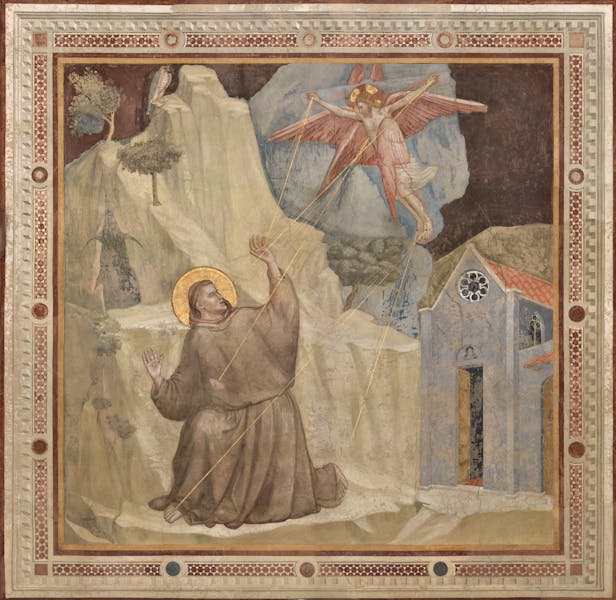
Giotto, Stigmatisation of St. Francis, scene from the Stories of St. Francis, 1317–25. Basilica of Santa Croce, transept wall above the Bardi Chapel
Where dating is concerned, we know that the frescoes were painted after St. Louis of Toulouse was canonised in 1317 because he is shown beside the two-light window, but the actual date is given as between 1317 and 1321 by Monciatti (2018) and as after Giotto's return from Naples c. 1333 by Boskovits (2001) and Tartuferi (2016). Unlike the Peruzzi chapel murals, the Bardi frescoes should be viewed from the centre of the chapel. In devising the upper scenes, Giotto allowed for the fact that they would be seen from below: witness the foreshortened building in the Renunciation. Compared to his earlier work in the aisles in Assisi or to the Scrovegni Chapel in Padua, the artist here changes the ratio between figure and setting, introducing ploys that alter the spatial nature of his scenes. He also transcends the rigid expressions of the era by exploring his figures' mindset, studying their expressions and gestures: the anger of the saint's father and cries of the boys being pulled by the hair in the Renunciation; the Saracens' fear of the showdown with Francis and of the Sultan's ensuing wrath in the Trial by Fire; or the grief and sentiment of the kneeling friars, the incredulity of the man probing the stigmata and the amazement of the friar watching the saint's soul being borne aloft into heaven in the Death.
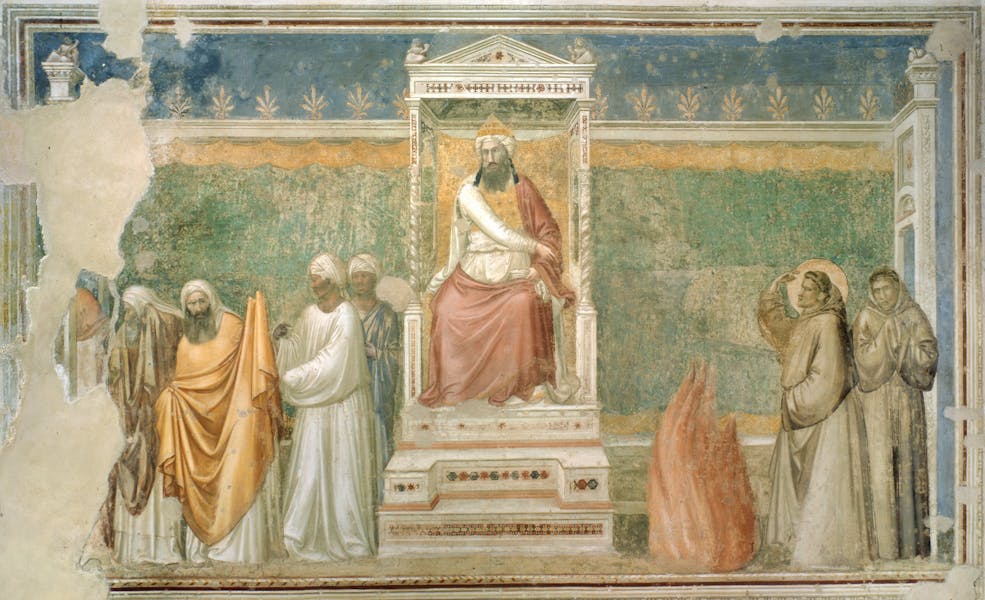
Giotto, St. Francis before the Sultan (Trial by fire), scene from the Stories of St. Francis, 1317–25. Basilica of Santa Croce, Bardi Chapel
